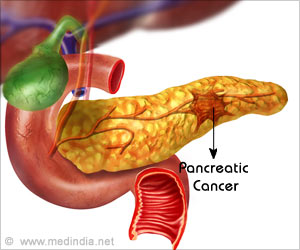More than one type of fibroblasts surrounds a pancreatic cancer. The discovery regarding the stromal cells may improve treatment options for pancreatic cancer.
- Pancreatic cancer is difficult to treat due to the stroma that surrounds it and prevents entry of chemotherapy medication
- Treatment that targets the stroma can make treatment more effective
- It is important to target the right cells of the stroma to obtain the beneficial effect
Pancreatic cancer is a difficult-to-treat cancer. Despite the fact that it is a rare cancer and ranks 12th in frequency among cancers in the United States, it ranks fourth as a cause of cancer deaths in the United States. The median survival duration after diagnosis is around 6 months, and a 5-year survival rate of about 8%. The inadequacies of the treatment to completely cure cancer has made research for the treatment of pancreatic cancer important.
In their experiment, the research team conducted tests on an organoid developed from pancreatic cancer called pancreatic ductal adenocarcinoma, but surrounded by tissue that surrounds pancreatic cancer in the body called stroma. The stroma of pancreatic cancers is much denser that found in several other cancers, thereby making it difficult for the medications to reach the cancerous growth. The researchers added a cell-type called CAFs - cancer-associated fibroblasts to the organoid culture to grow these cells.
Based on the experiment, the findings showed that
- There are at least two types of fibroblasts that surround the pancreatic ductal cancer
- The inner subtype produces high levels of a type of protein called alpha smooth muscle actin, or αSMA
- The outer subtype secretes interleukin 6 (IL-6). Interleukin 6 plays a role in cancer cell proliferation, muscle wasting and reduced immunity
Pancreatic Cancer
The pancreas is an important gland in the abdomen. While it produces pancreatic juice that is poured into the intestine to help in the digestion of food, it also secretes hormones like insulin and glucagon into the blood that control blood glucose levels. Low levels of insulin result in type 1 diabetes. Most pancreatic cancers arise from the tissues that secrete digestive juices.
The early stages of pancreatic cancer are usually not associated with any symptoms and screening tests for early diagnosis are usually not available. It is often diagnosed in the later stages when it has spread to other parts of the body. Late symptoms include jaundice, abdominal pain and weight loss.
Reference:
- Ohlund D et al. "Distinct populations of inflammatory fibroblasts and myofibroblasts in pancreatic cancer" Journal of Experimental Medicine February 23, (2017)
- NCI is the nation's leader in cancer research - (https://www.cancer.gov)
Source-Medindia
















